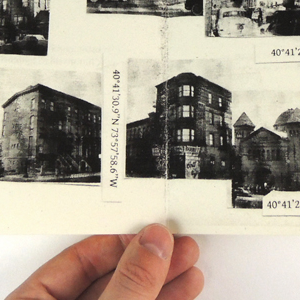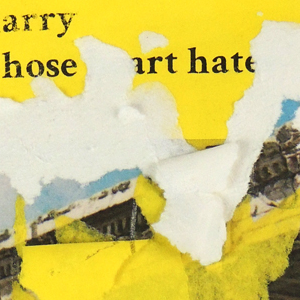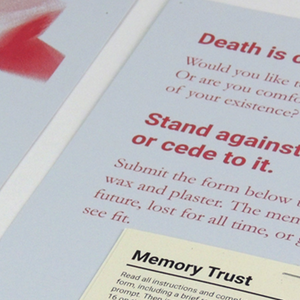Memory Trust
Soon We Will Be Gone. Destruction is the inevitable fate of most existent things. What we create today will remain only in part. Through the holes created by degradation, new narratives and mystery arise.
One of three parts, the Memory Trust is a service for managing the memory of one's life after death occurs.
Many wish to be remembered after death, but little will remain of us after our immediate friends and family are also gone. In response to this, the Memory Trust creates mementos that can be used to preserve oneself, or as a tool for accepting and contemplating the inevitability of being forgotten through death.
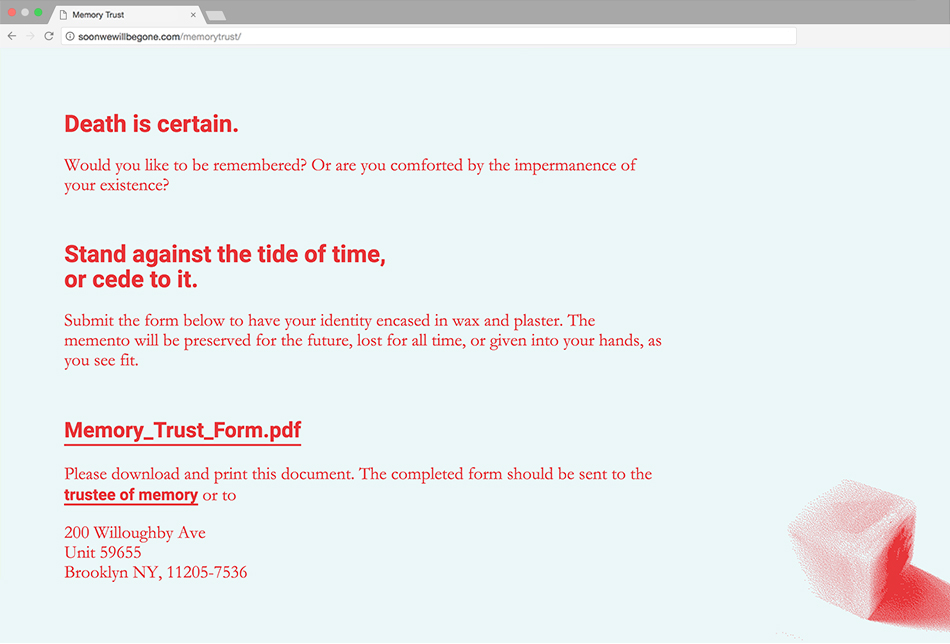
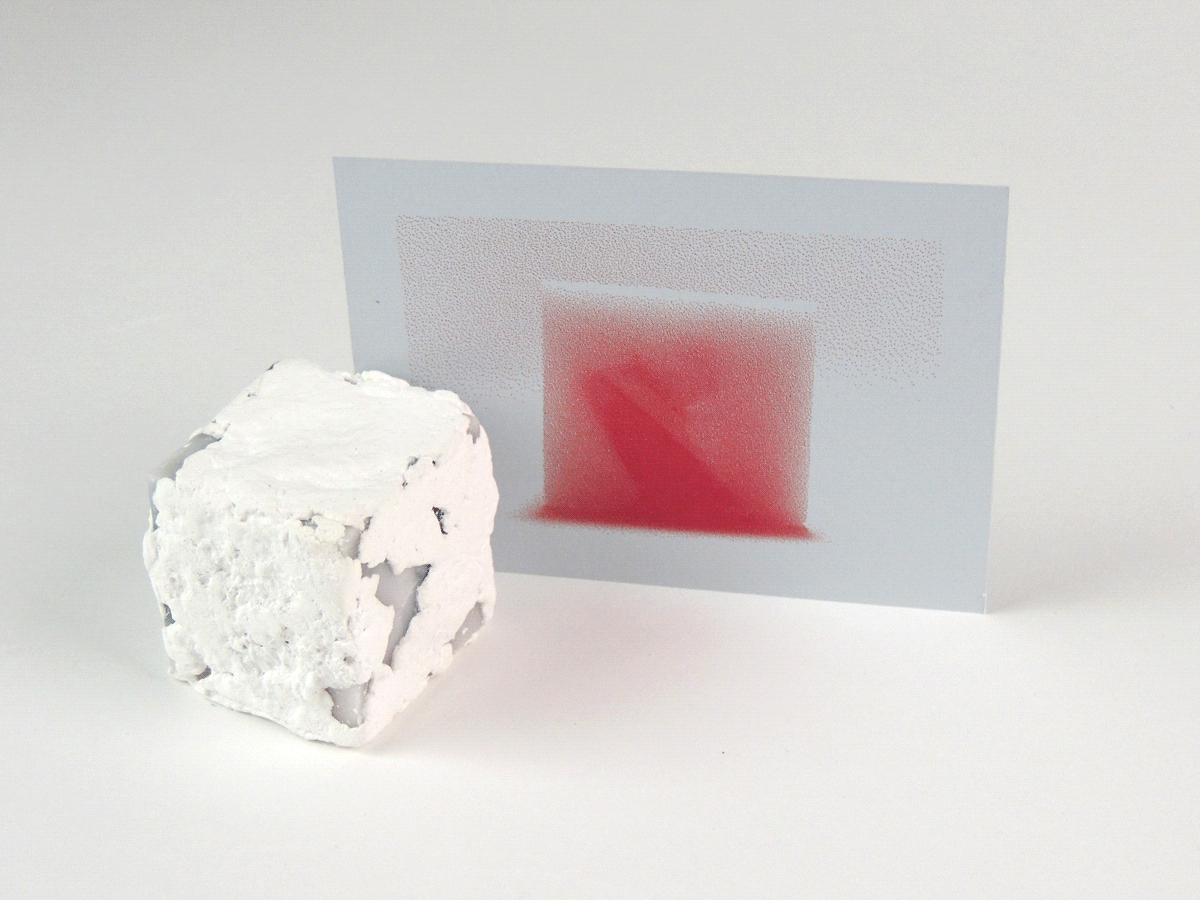
Each wax memento contains an individual’s response to personal questions, and is tinted to indicate the feeling of the life within. Since wax is both water resistant and readily burned, the cube may be preserved over time, or destroyed as the recipient desires. However the full contents of the cube can only be access through its destruction by melting. The memento can provide a glimpse into a life, even after it has expired.
The wax blocks are packaged with a plaster and paper-pulp shell for privacy. The shell must be peeled off to view the cube.
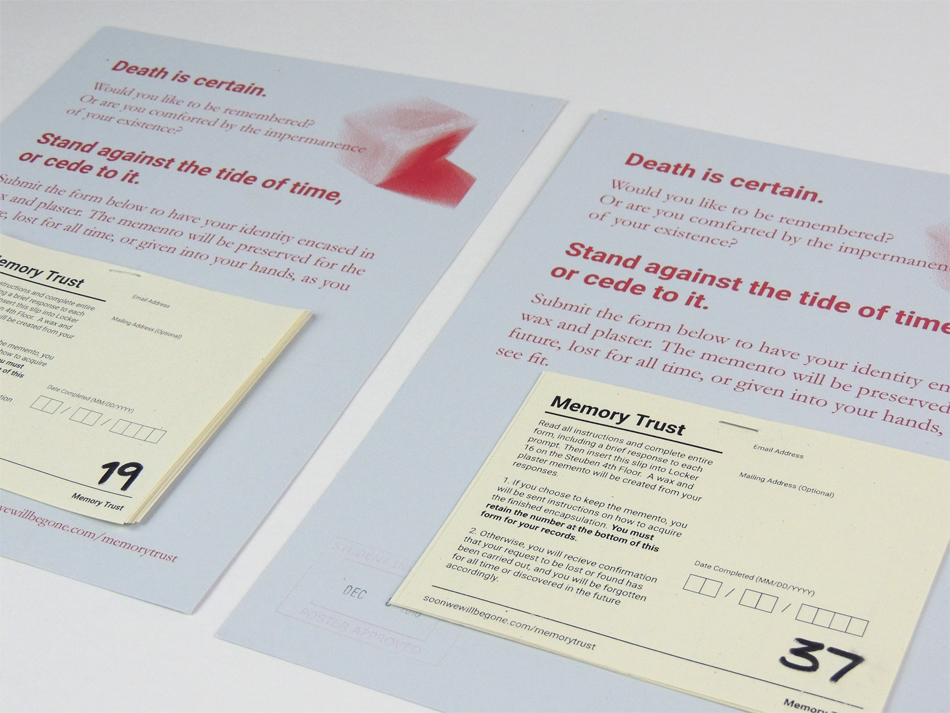
To apply for memory trust, an individual could take a questionnaire from flyers posted around campus and submit it to a dead drop, or download it from soonwewillbegone.com/memorytrust and mail it to “The Trustee of Memory”.
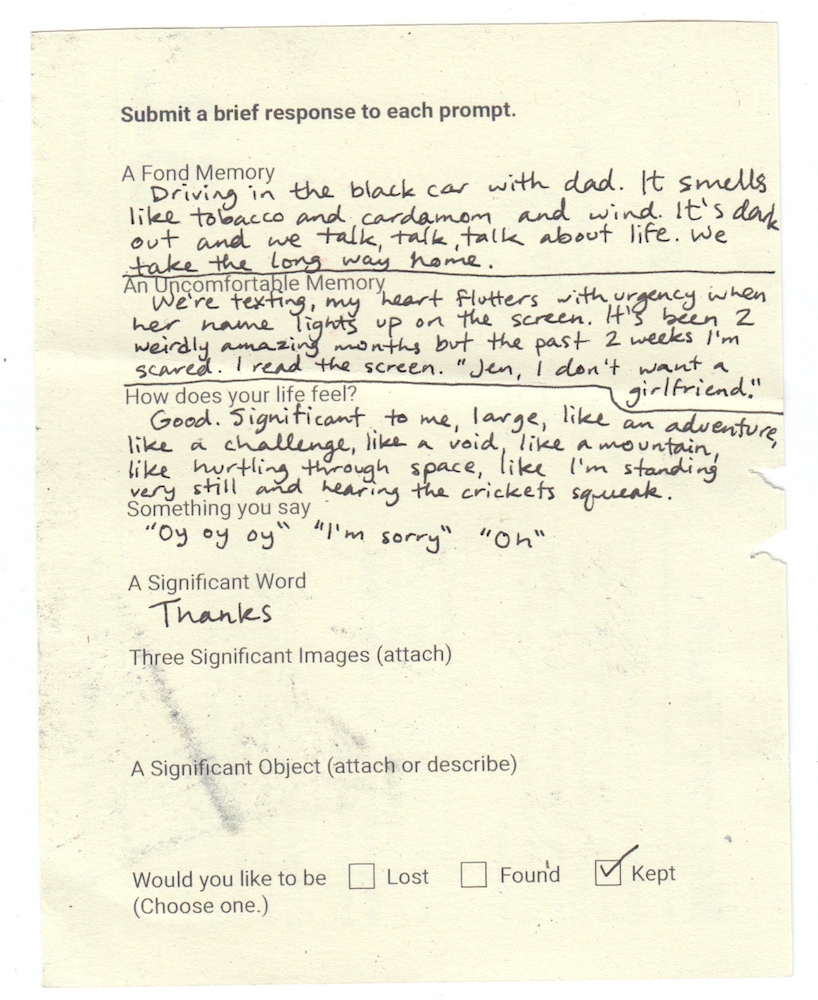
The completed memento is sent to the applicant, destroyed, or cached for future discovery according to the desires expressed on the application.
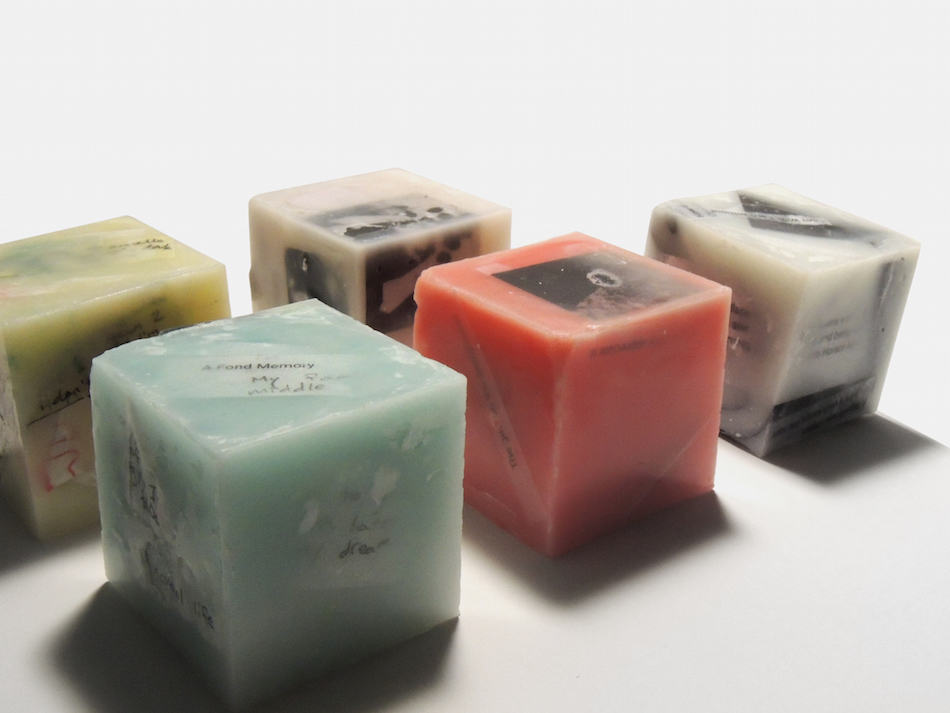
This project began with the idea of candles as self-destroying objects, which lead to the further consideration of wax as a material. The final blocks are made with paraffin, beeswax and crayon for coloring, which is poured into an acrylic mold.
The manufacturing process is shown in steps below.
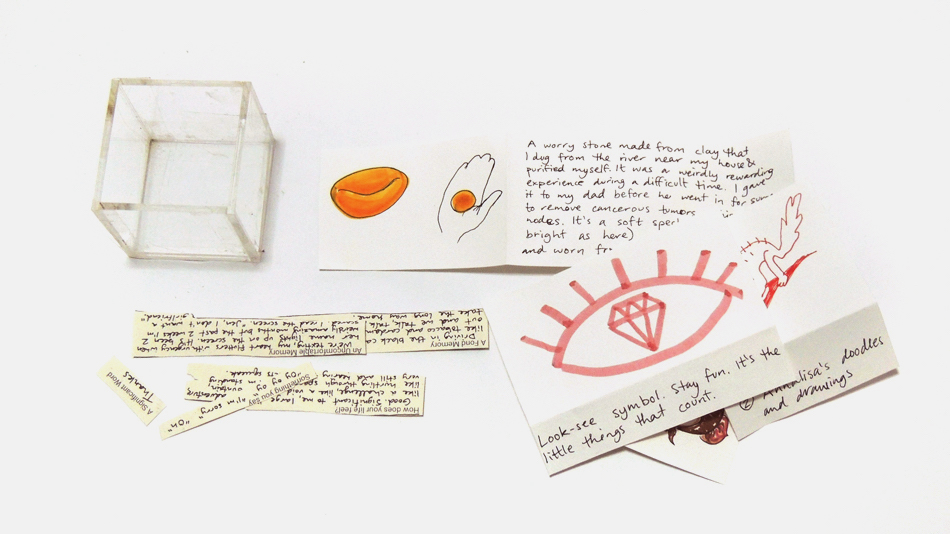

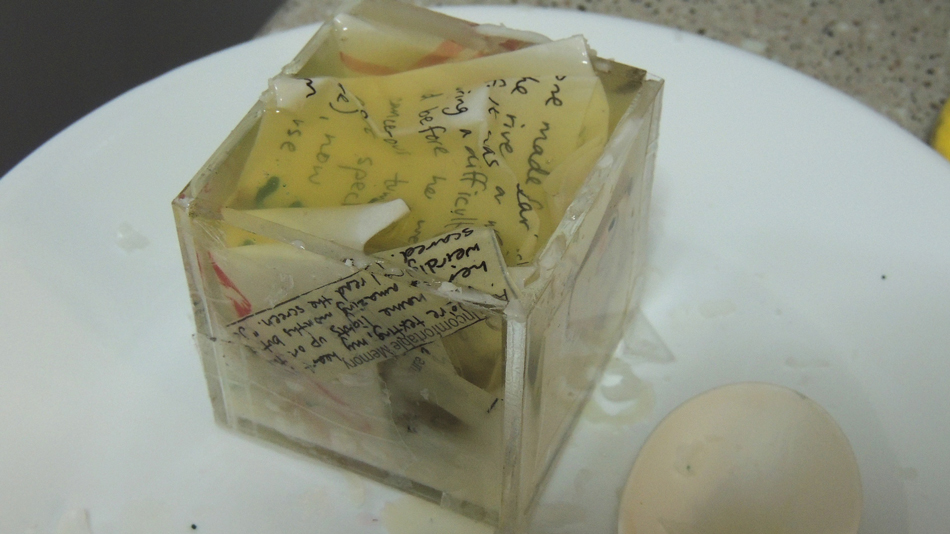
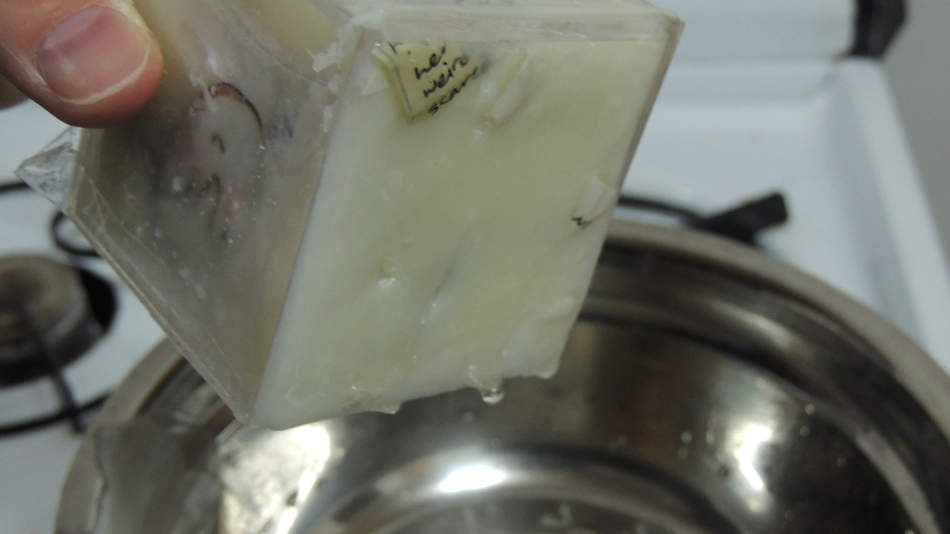
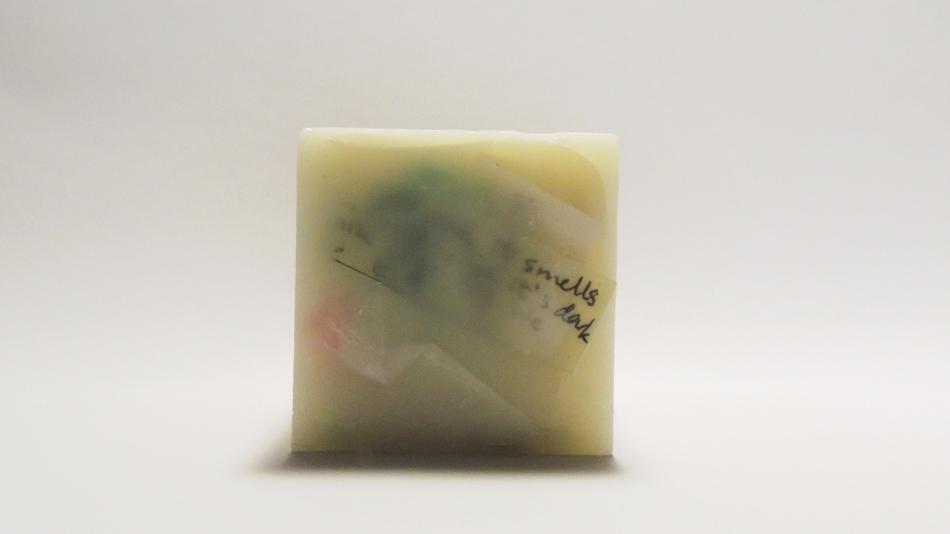
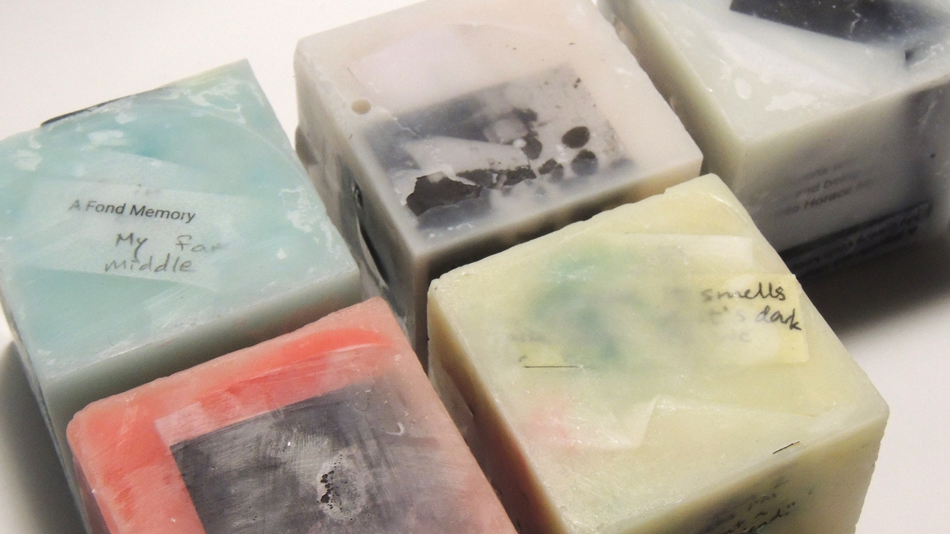
First, questionnaire is cut and folded to fit 2 x 2 x 2 inch mold. Fragments are arranged in mold, which is filled with molten wax. Once the wax hardens, the top pouring surface is melted smooth in a double boiler. After cooling for about twelve hours the block is ready for its final coating of plaster and paper pulp.
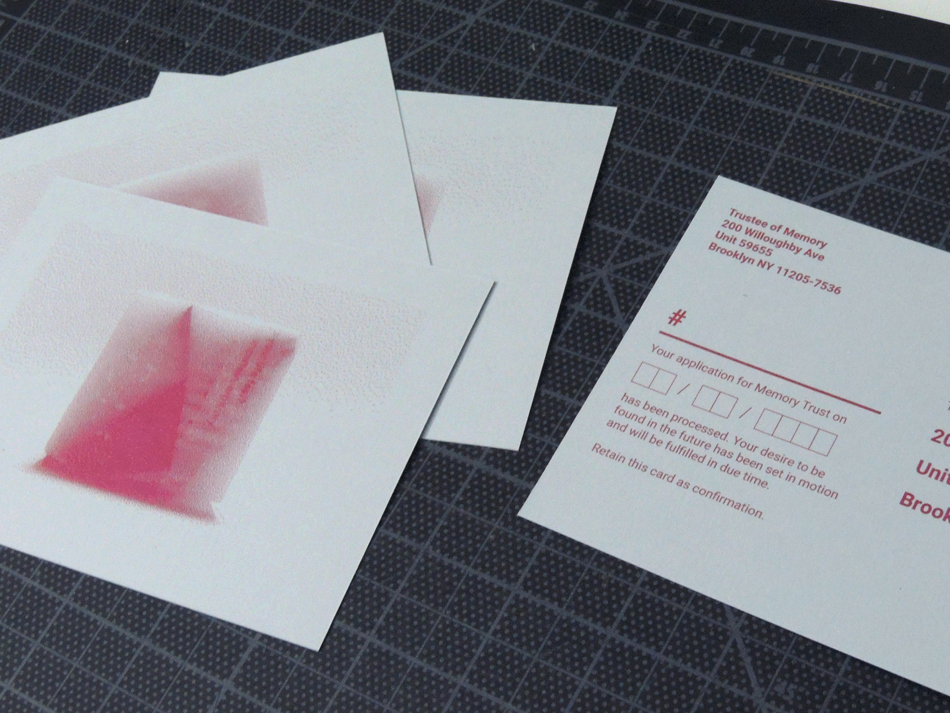
Confirmation messages are prepared for those who choose to not retain their memento.
Soon We Will Be Gone
Project Statement
I began with the idea of destruction, specifically the activities of ISIS destroying World Heritage Sites. Disheartened by the general state of the world, I wanted to see if there could be some positive response towards destruction to undermine acts of cultural cleansing.
Destruction of all scales is innate to human experience, from forgetting details of the day, to losing physical property, to death, to war, to natural disaster. I began to explore human and natural disaster throughout history as a way to understand current conflicts. However placing current events in a long history of destruction only made the situation seem more dark and futile.
I then researched artists that use destruction. For Jean Tinguely’s Homage to New York, a self- destructing kinetic sculpture, “Utter destruction is necessary because [it] is grandiose, spectacular.” The level of destruction testifies to its magnificent existence.

This applies to ISIS destroying cultural heritage — they affirm the value of an artifact by choosing to publicly destroy it — but the likening to Tinguely’s work ends there.
For humans, a grand death does not correspond to a grand life, and when things or people are destroyed against their will, as they almost always are, it is not something to celebrate.
From looking at Tinguely and the work of other artists (Alexander Gutke “The White Light of the Void”, Ariel Schlesinger “Bubble Machine”, Kris Martin “100 years” and “For Whom...”) I became interested in how material corresponds to the idea of destruction.
I turned to the idea of individual memory and forgetting as a kind of destruction. The themes of interest to me were memory, individuality, the inevitability of destruction, natural deterioration, and finding something positive in the midst of these things. This lead to my final proposal:
Destruction is the inevitable fate of most existent things. What we create today will remain only in part. Through the holes created by degradation, new narratives and mystery arise.
Soon We Will Be Gone is a three part exploration of this idea.
